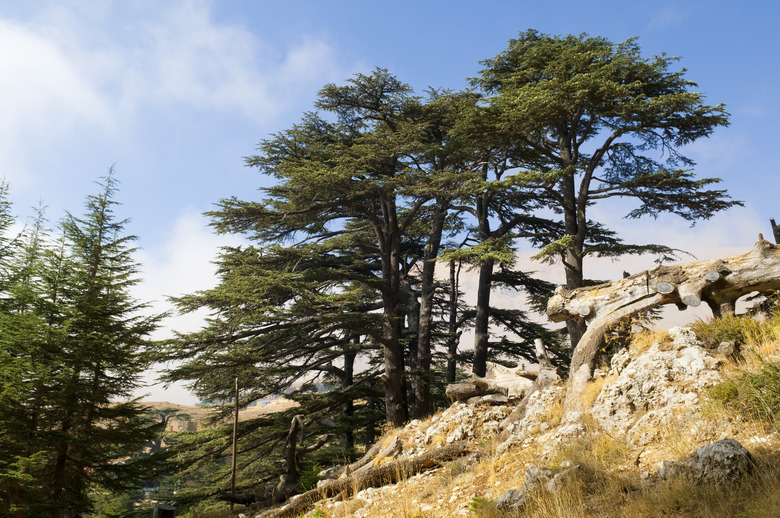The Average pH Of Soil Under Cedar Trees
Cedar trees grow naturally in many parts of the country and have specific soil needs to grow. These towering evergreens make impressive additions to your yard and landscape. In some cases, little else grows beneath the towering canopies because the large trees shade the areas around them, and their roots compete with smaller plants for water and nutrients.
Types of Cedar Trees
Types of Cedar Trees
There are numerous species of cedar trees. Some prefer acidic soils and some prefer alkaline soils. There are also some cedar trees that are adapted to both, such atlas cedar (Cedrus atlantica, USDA zones 6-9) This evergreen grows at a slow to average rate on well-draining soils, either with an acid pH or alkaline pH (5.0-8.0)
The "cedar of Lebanon" (Cedrus libani, zones 5-7) is a cold, hardy evergreen tree that prefers acidic soil (less than 6.0) but tolerates alkaline soil (greater than 8.0). The deodar cedar (Cedrus deodara, zones 7-9) is a needled evergreen that also grows well when planted on acidic or alkaline soils (6.0-8.0) that drains well.
Some trees with "cedar" in their common names aren't actually "true" cedars in the Cedrus genus. The Eastern red cedar (Juniperus virginiana, zones 2-9), is an extremely cold-tolerant evergreen that can thrive in an alkaline or acidic soil (6.0-8.0).
The Eastern white cedar, also called Northern white cedar and American arborvitae (Thuja occidentalis, zones 2-7) is another extremely cold-tolerant evergreen, but this tree needs moist alkaline soils (greater than 8.0) to flourish. The Western red cedar (Thuja plicata, zones 5-7) evergreen flourishes on acidic to alkaline soil (5.0-8.0).
What Is Soil pH?
What Is Soil pH?
The pH of soil measures the level of hydrogen in the soil. When hydrogen leaves the soil, the soil becomes acidic; conversely, when more hydrogen enters the soil, it becomes alkaline, or basic.
A scale from 0 to 14 determines the pH, with a pH of 7 at the neutral median point; anything below is acidic and anything above the median is alkaline. The average pH for cedar trees ranges from 6.0 to 8.0.
Plants Compatible With Cedars
Plants Compatible With Cedars
Plants with similar soil and nutrient requirements can thrive beneath cedar trees. While many plants will not grow in the acidic soil beneath cedar trees, plants such as blueberries (Vaccinium spp.) and rhododendrons (Azalea spp.) tend to thrive there.
Hostas (Hosta spp.) have the same soil requirements as some cedar trees, that being slightly acidic to slightly alkaline, with a soil pH of 6.5 to 7.5. Make sure you water your hostas regularly to get them established.
Grow shade-tolerant grass underneath cedar trees, because this area is likely not to get much sun. Another option is simply to mulch around cedars, which helps conserve moisture for these large trees.
